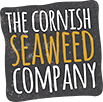For a lot of people, seafood means fish, crustaceans and the occasional ring of calamari. For a lot of vegans and vegetarians it basically means nothing at all, which we see as a real shame. In her recent article on One Green Planet, Heather McLees, points out that when she became a health nut she’d have to learn to love like green stuff she ‘used to avoid as a kid on the beach,’ as it contains so many essential vitamins and nutrients that a non-meat eater can find it hard to come by. She explains in practical terms, the benefits of eating seaweed:
- Provides the body with magnesium, zinc, Vitamin B12, biotin, and iron
- Just one gram of seaweed provides your entire day’s worth of iodine, a critical mineral for the thyroid.
- Increases hair and nail growth
- Clears the skin and enhances eyesight
- Improves mood by reducing anxiety and enhancing mental focus
- Prevents anemia and fatigue
- Cleanses the digestive tract
- Alkalizes the blood
- Prevents and treats sugar cravings
- May prevent depression
Below are a few species every vegan chef should add to their repertoire.
Types of seaweed
If you are new to seaweed then look no further than Dulse for your introduction, a small purple seaweed that crunches with ocean goodness. It is a has a light, salty, flavour and will add glorious texture to any salad. It is great for keeping your iron levels up, boasting a higher content in eight grams than 100 grams of sirlion steak.
Carrageen (or Irish Moss) tastes almost completely neutral and has a subtle flowery aroma. The reason you want to cook with it is its carrageenan content (around 71%) which is an immensely useful resource in a vegan diet. It can be used as a thickener for sauces and gravy, and remarkably as a replacement for gelatin. It also has antiviral properties.
Nori is a type of seaweed that many will already have come across as the dark wrapping paper of sushi parcels. It contains a lot of protein (around 44%), has the highest vitamin A content of all species of seaweed and contains more vitamin C than oranges! It’s vitamin B12 content is also worth mentioning, as it is comparable to meat.
Kombu is a large brown species that contains the pigment fucoxanthin, which helps to turn fat straight into energy, rather than allowing it to be stored in your body. The effect it has on metabolism makes it a great candidate to go in bean dishes.
A green algae that grows in the deep sea, Spirulina is without question one of the richest sources of protein in the plant kingdom, and as Heather McLees pointed out ‘a single teaspoon contains 150% of your daily vitamin B12 requirements. This species almost seems designed for vegetarians!
If we are to believe the claims of Japanese folklore, eating Hijiki will bless you with luxurious black hair. If we are to believe the claims of scientists, Hijiki contains 14 times the amount of calcium as cow’s milk, not to mention many other nutritional/ health benefits associated with other types of seaweed. Whoever we believe, in the absence of milk, Hijiki should step into the limelight.
Now you know how amazing seaweed is, why not get out there and try cooking with it? Check out our recipes section for some inspiration. We recommend you start with something simple like the Dulse Mash or the Green Beans with Kombu
